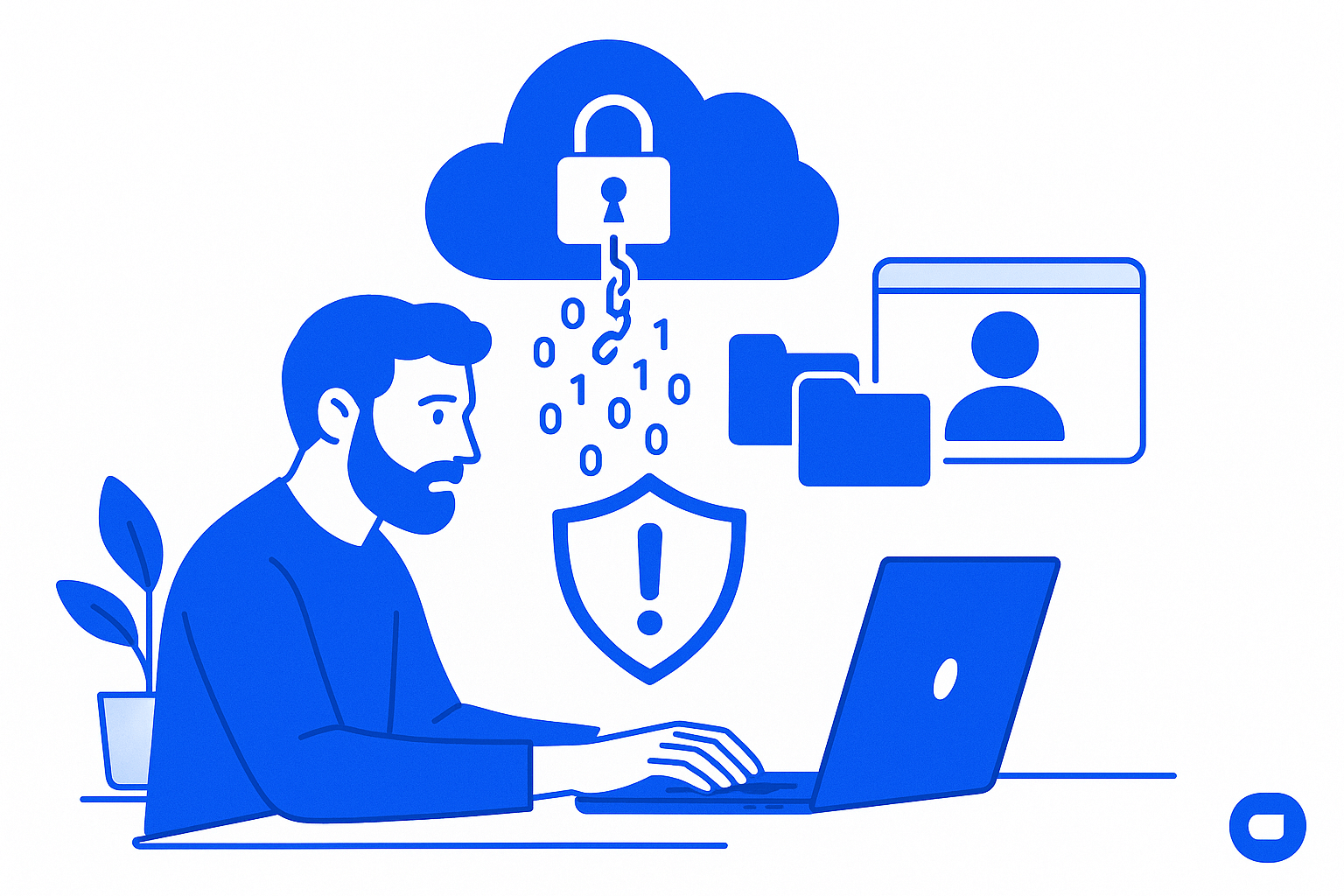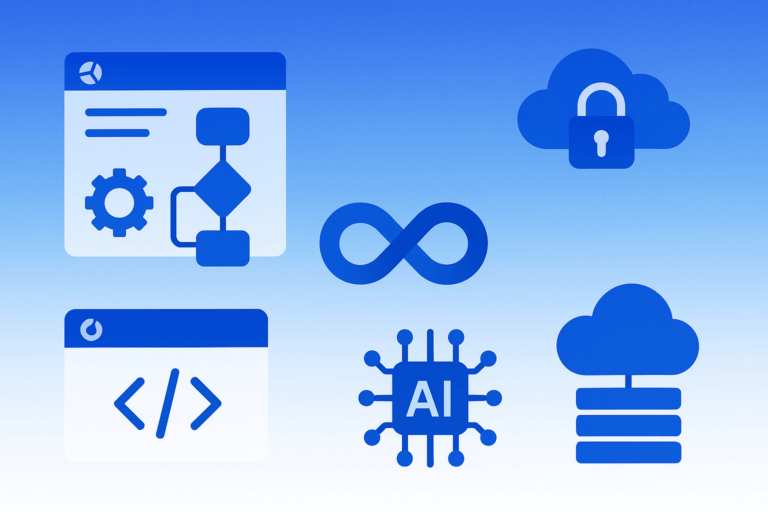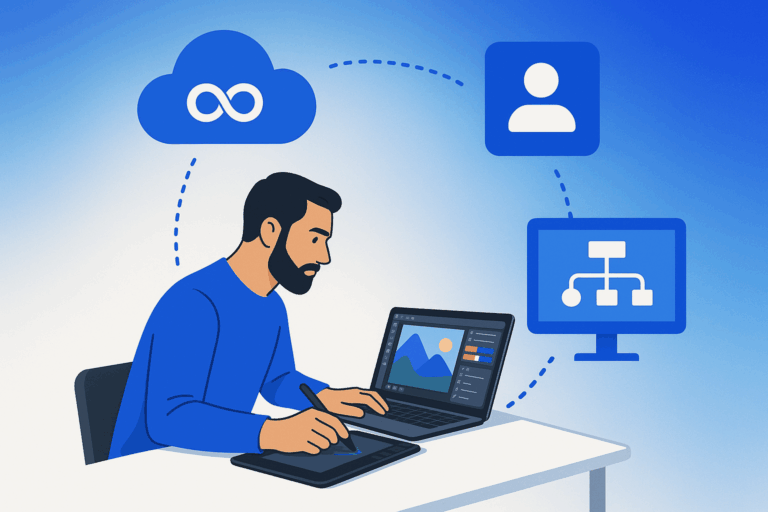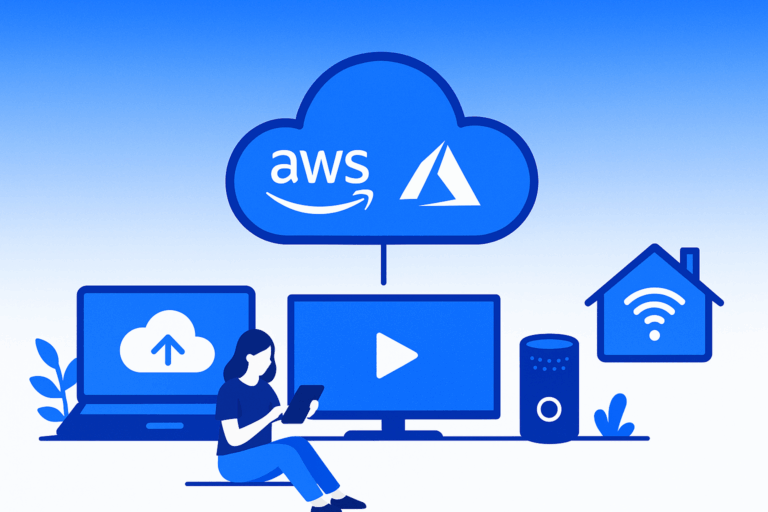Real Stories of Data Breaches in the Cloud and What You Can Learn from Them

Introduction: When Cloud Security Nightmares Become Reality
Picture this: It’s 3 AM, and your phone won’t stop buzzing. Your heart sinks as you read the notification – your company’s cloud infrastructure has been breached. Millions of customer records are exposed. Your stomach churns as you realize this could have been prevented. 😰
Welcome to the harsh reality of cloud security in 2025, where 82% of data breaches involve data stored in the cloud. If you’re an IT professional, DevOps engineer, or software development company leader, this statistic should keep you up at night. But here’s the thing – it doesn’t have to.
The Staggering Cost of Complacency 💸
Let’s talk numbers that’ll make your CFO sweat. The average cost of a data breach reached an all-time high in 2024 of $4.88 million, a 10% increase from 2023. For cloud-specific breaches? Even worse. The cost of a data breach in cloud environments was even higher, averaging $5.17 million.
But it’s not just about money. It’s about trust, reputation, and sometimes, survival. When National Public Data suffered a breach affecting 2.9 billion records, it wasn’t just numbers on a spreadsheet. It was real people’s lives turned upside down.

Why Cloud Breaches Are Skyrocketing 📈
Here’s a reality check: Cloud environment intrusions increased by 75% year over year in 2023. Why? Because while we’ve rushed to embrace cloud technology, our security practices haven’t kept pace. It’s like building a Ferrari engine but forgetting to install the brakes.
The culprit? Often, it’s the simplest things:
- Misconfigured cloud settings (we’ll show you horror stories)
- Stolen credentials (yes, even in 2025)
- Lack of multi-factor authentication (seriously?)
- Poor DevOps security practices (we’ll fix that)
What Makes This Article Different 🎯
You’ve probably read dozens of generic “cloud security best practices” articles. This isn’t one of them. We’re diving deep into real breaches, real companies, and real lessons. You’ll discover:
- Actual attack patterns used by cybercriminals
- Specific misconfigurations that led to massive breaches
- Practical terraform security implementations you can deploy today
- DevOps workflows that actually prevent breaches
- AI-powered security strategies for modern cloud environments
The Current State of Cloud Security: A Wake-Up Call 🚨
By the Numbers: The Breach Epidemic
The statistics paint a sobering picture. Cloud security is a major concern for 83% of organizations in 2024, underscoring the need for robust measures. Let’s break down what’s really happening:
The Breach Timeline Reality:
- Detection Time: It takes organizations an average of 204 days to identify a data breach and 73 days to contain it
- Total Impact: That’s 277 days of potential damage
- Cost Accumulation: Each day costs approximately $17,600
Who’s Getting Hit:
- Public sector (88%) and startups (89%) were the most affected by cloud security breaches in 2023
- Healthcare remains the costliest target: Healthcare data breaches have been the most expensive for 14 years in a row
- Financial services saw a 160% increase in interactive intrusion activity
The Attack Vectors: How They’re Getting In 🔓
Understanding how breaches happen is your first line of defense. Here’s what the data reveals:
1. Stolen Credentials – The Old Favorite
Cyberattacks using stolen or compromised credentials increased 71% year-over-year. Yes, in our age of advanced AI and quantum computing, hackers are still succeeding with stolen passwords.
2. Misconfiguration Mayhem
Security misconfigurations make up 30% of web application vulnerabilities. These aren’t sophisticated attacks – they’re walking through doors we left open.
3. Cloud-Specific Vulnerabilities
- 32% of incidents involved legitimate tools used for malicious purposes
- Remote Monitoring and Management tools were used in approximately 14% of all intrusions
The Human Factor: Your Weakest Link? 👥
Here’s a statistic that should humble us all: Human error is responsible for 88% of all data breaches. Let that sink in. Nearly 9 out of 10 breaches happen because someone, somewhere, made a mistake.
Common human errors include:
- Forgetting to enable MFA (yes, really)
- Misconfiguring cloud storage buckets
- Using default or weak credentials
- Failing to patch known vulnerabilities
- Sharing secrets in code repositories
Real-World Breach Stories: Learning from Others’ Pain 📚
Case Study 1: The Snowflake Avalanche ❄️
One of 2024’s most shocking breaches involved Snowflake, and it’s a masterclass in how simple mistakes cascade into disasters.
What Happened:
The attacker, known as UNC5537, didn’t use sophisticated zero-day exploits. They didn’t need to. All it took to steal data from some of the world’s biggest companies was a few stolen credentials.
The Domino Effect:
- Ticketmaster: 40 million users affected
- AT&T: Customer data exposed
- Santander: Financial records compromised
- Mitsubishi: Corporate data stolen
The Critical Failure:
None of the stolen accounts had MFA enabled. Let that be your takeaway – if billion-dollar companies can forget MFA, so can you. But you shouldn’t.
Lessons for DevOps Teams:
- Enforce MFA everywhere – no exceptions
- Implement credential rotation policies
- Use terraform to automate security configurations
- Deploy AWS IAM or Azure AD conditional access
Case Study 2: Change Healthcare – The $100 Million Mistake 💊
Change Healthcare suffered the largest health-related data breach of the year, affecting over 100 million customer records. This wasn’t just a breach – it was a catastrophe.
The Attack Vector:
- Initial compromise through phishing
- Lateral movement through unsegmented networks
- Data exfiltration over several months
The Business Impact:
- $650,000 settlement for just one related case
- Operational disruption for weeks
- Regulatory scrutiny that’s still ongoing
- Trust erosion among healthcare providers
DevOps Security Implementations That Could Have Helped:
# Example: Network Segmentation with Terraform
resource "aws_vpc" "healthcare_vpc" {
cidr_block = "10.0.0.0/16"
enable_dns_hostnames = true
enable_dns_support = true
tags = {
Name = "healthcare-production"
Environment = "production"
Compliance = "HIPAA"
}
}
resource "aws_subnet" "private_subnet" {
vpc_id = aws_vpc.healthcare_vpc.id
cidr_block = "10.0.1.0/24"
map_public_ip_on_launch = false
tags = {
Name = "private-healthcare-data"
Type = "private"
}
}
Case Study 3: Toyota’s Eight-Year Oversight 🚗
Imagine discovering your data has been exposed not for days or months, but for eight years. That’s exactly what happened to Toyota.
The Timeline of Terror:
- February 2015: Misconfiguration introduced
- May 2023: Breach discovered
- 260,000 customers: Potentially affected
What Went Wrong:
A simple cloud storage misconfiguration left customer data accessible. For eight years, this ticking time bomb sat unnoticed.
Critical Terraform Security Configurations:
# Secure S3 Bucket Configuration
resource "aws_s3_bucket" "customer_data" {
bucket = "toyota-customer-data-secure"
}
resource "aws_s3_bucket_public_access_block" "customer_data" {
bucket = aws_s3_bucket.customer_data.id
block_public_acls = true
block_public_policy = true
ignore_public_acls = true
restrict_public_buckets = true
}
resource "aws_s3_bucket_encryption" "customer_data" {
bucket = aws_s3_bucket.customer_data.id
rule {
apply_server_side_encryption_by_default {
sse_algorithm = "AES256"
}
}
}
The True Cost of Cloud Breaches: Beyond the Headlines 💰
Financial Impact Breakdown
When we talk about breach costs, the numbers are staggering:
| Breach Type | Average Cost | Detection Time | Industry Most Affected |
|---|---|---|---|
| Cloud-specific | $5.17 million | 207 days | Healthcare |
| Ransomware | $4.91 million | 280 days | Financial Services |
| Insider Threat | $4.18 million | 85 days | Technology |
| Supply Chain | $4.63 million | 294 days | Manufacturing |
The Hidden Costs Nobody Talks About 🤫
Beyond the immediate financial hit, breaches create ripple effects:
1. Operational Disruption
- Downtime costs: $5,600 per minute on average
- Recovery time: 23 days mean time to recovery
- Productivity loss: 35% decrease for 3-6 months
2. Reputation Damage
Hospitals spend 64 percent more on advertising the two years following a breach. That’s money that could’ve been spent on security.
3. Compliance Penalties
- GDPR fines: Up to 4% of global revenue
- HIPAA violations: $50,000 to $1.5 million per incident
- SOC 2 failures: Contract losses and audit costs
Modern Attack Patterns: Know Your Enemy 🎭
The Evolution of Cloud Attacks
Today’s attackers are sophisticated, patient, and creative. Here’s what they’re doing:
1. Living Off the Land
32% of incidents involved legitimate tools being used for malicious purposes. Attackers use your own tools against you:
- PowerShell for execution
- WMI for persistence
- Cloud CLIs for data exfiltration
2. Supply Chain Compromises
Instead of attacking you directly, they compromise your vendors:
- SolarWinds: 18,000 organizations affected
- Kaseya: 1,500 businesses impacted
- CodeCov: Exposed credentials for hundreds
3. AI-Powered Attacks
The bad guys are using AI too:
- Automated vulnerability scanning
- Intelligent phishing campaigns
- Deepfake social engineering
- Pattern-based credential stuffing
Defensive Strategies That Actually Work 🛡️
Zero Trust Architecture Implementation:
# Example: Zero Trust Network Policy
apiVersion: networking.k8s.io/v1
kind: NetworkPolicy
metadata:
name: zero-trust-policy
spec:
podSelector:
matchLabels:
app: sensitive-data
policyTypes:
- Ingress
- Egress
ingress:
- from:
- podSelector:
matchLabels:
authorized: "true"
ports:
- protocol: TCP
port: 443
Building Your Cloud Security Arsenal with DevOps 🔧
Infrastructure as Code: Your Security Foundation
Let’s talk about why terraform and infrastructure as code are your best friends in cloud security.
Benefits of IaC for Security:
- Consistency: No more “it works on my machine”
- Auditability: Every change is tracked
- Repeatability: Deploy secure configs every time
- Compliance: Automated policy enforcement
Practical Terraform Security Module:
module "secure_vpc" {
source = "./modules/secure-vpc"
vpc_cidr = "10.0.0.0/16"
enable_flow_logs = true
enable_guardduty = true
enable_security_hub = true
enable_config_recorder = true
tags = {
Environment = "production"
Compliance = "PCI-DSS"
ManagedBy = "terraform"
}
}
DevOps Security Integration Pipeline 🔄
Here’s a battle-tested CI/CD security pipeline:
# .gitlab-ci.yml Security Pipeline
stages:
- validate
- scan
- test
- deploy
- monitor
terraform_validate:
stage: validate
script:
- terraform init
- terraform validate
- terraform fmt -check
security_scan:
stage: scan
script:
- tfsec .
- checkov -d .
- terrascan scan
container_scan:
stage: scan
script:
- trivy image $CI_REGISTRY_IMAGE:$CI_COMMIT_SHA
deploy_secure:
stage: deploy
script:
- terraform plan -out=tfplan
- terraform apply tfplan
only:
- main
Microservices Security: A Practical Implementation Guide 🔬
Real-World Microservices Security Architecture
Let’s implement a secure microservices architecture that actually works:
// API Gateway with Security Headers
const express = require('express');
const helmet = require('helmet');
const rateLimit = require('express-rate-limit');
const app = express();
// Security headers
app.use(helmet({
contentSecurityPolicy: {
directives: {
defaultSrc: ["'self'"],
scriptSrc: ["'self'", "'unsafe-inline'"],
},
},
}));
// Rate limiting
const limiter = rateLimit({
windowMs: 15 * 60 * 1000, // 15 minutes
max: 100, // limit each IP to 100 requests
message: 'Too many requests from this IP'
});
app.use('/api/', limiter);
// JWT validation middleware
const validateJWT = (req, res, next) => {
const token = req.headers.authorization?.split(' ')[1];
if (!token) {
return res.status(401).json({ error: 'No token provided' });
}
try {
const decoded = jwt.verify(token, process.env.JWT_SECRET);
req.user = decoded;
next();
} catch (err) {
return res.status(403).json({ error: 'Invalid token' });
}
};
Service Mesh Security Configuration
# Istio Service Mesh Security Policy
apiVersion: security.istio.io/v1beta1
kind: PeerAuthentication
metadata:
name: default
namespace: production
spec:
mtls:
mode: STRICT
---
apiVersion: security.istio.io/v1beta1
kind: AuthorizationPolicy
metadata:
name: frontend-ingress
namespace: production
spec:
selector:
matchLabels:
app: frontend
action: ALLOW
rules:
- from:
- source:
principals: ["cluster.local/ns/production/sa/backend"]
to:
- operation:
methods: ["GET", "POST"]
Cloud Security Troubleshooting Guide 🔍
Common Issues and Solutions
| Issue | Symptoms | Root Cause | Solution |
|---|---|---|---|
| Exposed S3 Buckets | Data accessible publicly | Misconfigured ACLs | Apply bucket policies via Terraform |
| Credential Leakage | Unauthorized access | Hardcoded secrets | Use AWS Secrets Manager |
| Network Breaches | Lateral movement | No segmentation | Implement VPC isolation |
| API Abuse | High bills, DDoS | No rate limiting | Deploy API Gateway |
| Container Escapes | Host compromise | Privileged containers | Use security contexts |
Diagnostic Commands for DevOps Engineers
# Check for exposed S3 buckets
aws s3api list-buckets --query 'Buckets[*].Name' | \
xargs -I {} aws s3api get-bucket-acl --bucket {}
# Scan for secrets in code
trufflehog git https://github.com/yourrepo --json
# Audit IAM permissions
aws iam get-account-authorization-details > iam-audit.json
# Check security group rules
aws ec2 describe-security-groups \
--filters "Name=ip-permission.from-port,Values=0" \
--query 'SecurityGroups[?IpPermissions[?FromPort==`0`]]'
Why choose Devolity
Unmatched Expertise in
Cloud and Cybersecurity
Devolity team of certified professionals brings decades of combined experience in managing complex cloud environments and defending against evolving cyber threats.
01
End-to-End Solutions for Every Business Need
DevOps with Cybersecurity Services: Hybrid/multi-cloud management, cost optimization, and DevOps integration with Risk assessments.
02
Customized Strategies, Not One-Size-Fits-All
We understand every business is unique. Devolity prioritizes collaboration, crafting bespoke solutions aligned with your industry, goals, and risk profile.
03
Proactive Protection with 24/7 Vigilance
Cyber threats never sleep—and neither do we. Devolity Security Operations Center (SOC) offers round-the-clock monitoring, rapid incident response.
How Devolity Business Solutions Optimizes Your Cloud Security 🚀
At Devolity, we don’t just talk about cloud security – we live and breathe it. Our team of certified AWS Solutions Architects and Azure Security Engineers has secured over 500+ cloud deployments across three continents.
Our Expertise Credentials:
- ✅ AWS Advanced Consulting Partner
- ✅ Microsoft Gold Partner for Cloud Platform
- ✅ HashiCorp Terraform Certified Partners
- ✅ ISO 27001 & SOC 2 Type II Certified
- ✅ 24/7 Security Operations Center
What Sets Devolity Apart:
1. Proactive Security Posture
We don’t wait for breaches. Our AI-powered security platform monitors your infrastructure 24/7, detecting anomalies before they become incidents.
2. DevSecOps Integration
Security isn’t a checkpoint – it’s embedded in every stage of your development pipeline. Our terraform modules come pre-hardened with security best practices.
3. Compliance Automation
Whether it’s HIPAA, PCI-DSS, or GDPR, our automated compliance frameworks ensure you’re always audit-ready.
4. Incident Response Team
When seconds count, our expert team responds. Average response time: under 15 minutes.
Client Success Story:
“After experiencing a minor security incident, we partnered with Devolity. They not only secured our AWS infrastructure but reduced our cloud costs by 35% through optimization. Their terraform automation has made our deployments both faster and more secure.” – CTO, Fortune 500 Healthcare Company
Ready to Secure Your Cloud?
Contact our security experts at [email protected] or call 1-800-DEVOLITY for a free security assessment.
The Future of Cloud Security: What’s Next? 🔮
Emerging Threats on the Horizon
1. Quantum Computing Threats
Current encryption methods will become obsolete. Start planning for quantum-resistant cryptography now.
2. AI vs. AI Warfare
As defenders use AI, attackers are too. The battlefield is becoming automated.
3. Edge Computing Vulnerabilities
With computing moving to the edge, attack surfaces are exploding.
Preparing for Tomorrow’s Challenges
Investment Priorities for 2025:
- Zero Trust Architecture: Not optional anymore
- AI-Powered Security: Fight fire with fire
- DevSecOps Culture: Security as everyone’s job
- Continuous Compliance: Automate or fail audits
Your Action Plan: Start Today 📋
Don’t wait for a breach to take security seriously. Here’s your immediate action plan:
Week 1: Assessment
- [ ] Audit current cloud configurations
- [ ] Identify exposed resources
- [ ] Review access permissions
- [ ] Check MFA enforcement
Week 2: Quick Wins
- [ ] Enable CloudTrail/Azure Monitor
- [ ] Implement basic WAF rules
- [ ] Deploy security scanning in CI/CD
- [ ] Encrypt all data at rest
Week 3: Infrastructure Hardening
- [ ] Implement network segmentation
- [ ] Deploy terraform security modules
- [ ] Configure automated backups
- [ ] Set up security alerts
Week 4: Continuous Improvement
- [ ] Establish security metrics
- [ ] Create incident response plans
- [ ] Schedule security training
- [ ] Plan penetration testing
Conclusion: Your Security Journey Starts Now 🎯
Cloud security isn’t a destination – it’s a journey. And with breach costs averaging $4.88 million, it’s a journey you can’t afford to delay.
Remember:
- Every breach started with a simple mistake
- Security is everyone’s responsibility
- Automation is your friend
- Perfect security doesn’t exist, but good security does
The stories we’ve shared aren’t meant to scare you – they’re meant to prepare you. Learn from others’ mistakes so you don’t repeat them.
Your cloud infrastructure doesn’t have to be the next breach headline. With the right tools, practices, and partners like Devolity, you can build a security posture that lets you sleep soundly at night.
Ready to Secure Your Cloud Infrastructure?
Don’t wait for a breach to take action. Contact Devolity Business Solutions today:
- 🌐 Visit: www.devolity.com
- 📧 Email: [email protected]
- 📞 Call: 1-800-DEVOLITY
- 💬 Chat: Available 24/7 on our website
Get your FREE Cloud Security Assessment (valued at $5,000) and discover vulnerabilities before attackers do.
Additional Resources 🔗
Learn More About Cloud Security:
- Red Hat Security Solutions
- AWS Security Best Practices
- HashiCorp Terraform Security
- Microsoft Azure Security Center
- DevOps Security Guide
Stay Updated:
AI-Powered Security Tools:
Remember: In cloud security, paranoia is a feature, not a bug. Stay vigilant, stay updated, and stay secure! 🔐
Transform Business with Cloud
Devolity simplifies state management with automation, strong security, and detailed auditing.







